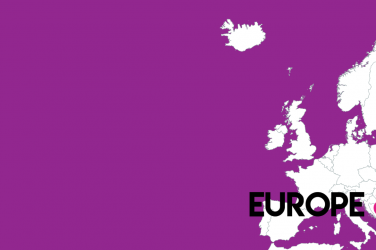Ahead of the upcoming snap elections in Spain on the 28th of April, Fernando Hortal Foronda reviews Spain’s current political situation and the concerns of the population.
Only eight months after the ultimately successful vote of no confidence that ousted Mariano Rajoy’s conservative government over a corruption scandal and brought Pedro Sánchez to La Moncloa, the socialist minority government has failed to pass the budgetary law for the present year. Lacking support to pass this fundamental piece of legislation, the government has called for a snap election to be held on April 28th. Few in Spain expected said law to pass, since the parliamentary coalition that voted for Sánchez was not a solid alliance aligned with the new government, but rather a coalition of dissimilar parties united by their rejection of Rajoy’s Popular Party government.
After two independence referendum simulacra in the last five years, and while twelve pro-independence political leaders and social activists are being tried in the Spanish Supreme Court, one would expect Catalonia to be one of the main issues -if not the main one- of the impending electoral campaign. Since right-wing parties do better when territorial issues dominate the political conversation, it’s no surprise that the three highest polling right-wing parties have outbid each other on the matter, proposing policies such as suspending Catalan self-government or curtailing cultural recognition of Spain’s co-official languages.
However, according to recent public opinion polls, voters across Spain are unlikely to have Catalonia in mind when casting their votes in April. Instead, unemployment (61%) and the state of the economy (25%) are on the top of the list of Spaniards’ political concerns. Given that most social and economic policies of the current government are well perceived by most of the electorate, the fact that unemployment and economic performance are at the centre of the political debate virtually boosts the chances of a Partido Socialista Obrero Español (PSOE)-led government in May. Economic woes are followed by corruption and political disaffection on the ranking of perceived problems (33% and 29%). State funded pensions, education and healthcare are also important concerns for the Spanish electorate. The situation in Catalonia is among the top three political concerns for less than 11% of the Spanish population. Also, the number of those primarily worried about migration is not any higher (9%), which sharply differentiates Spain from most European democracies. Last but not least, as women make up 55% of the undecided likely voters, and after the astonishing success of the feminist marches in almost every Spanish city and village on March 8th, the importance of gender equality might increase in the public sphere as the campaign unfolds.
How votes in the ballots will translate into majorities in parliament is anything but a straightforward process.
When an electoral system is as complex as Spain’s, the parties on one side or the other of the political spectrum winning the most votes does not guarantee a majority of seats in the lower chamber. Indeed, leaving Basque and Catalan nationalist parties aside, the previous General Election in 2015 saw the political right getting roughly one million less votes but two more seats than the left. Spain’s electoral system is a product of the country’s transition to democracy ‘from above’ in the 70’s, in which moderate reformists who had just been influential figures in the Francoist regime vastly influenced the design of democratic Spain. They did not miss the chance to shape the electoral system in a Machiavellian fashion -as the main negotiator of the right would later acknowledge. Consequently, and to put it in short, the electoral system has three substantive bias -rural, conservative and majoritarian. The rural and conservative bias manufacture right-wing majorities in a direct manner. The majoritarian bias has also indirectly help to produce right wing majorities because of the greater political fragmentation of the left, especially since the early 90’s.
However, the next elections could be bound to deliver a paradoxical result. Since the far-right party VOX emerged, three parties on the right are polling between 10 and 20%, while there will only be two main contenders on the left, Unidas Podemos and PSOE, with the latter potentially becoming the main beneficiary of the majoritarian bias of the system. Because of this bias, the three parties on the right combined could fail to obtain a majority even if they get as many votes as Partido Popular (PP) obtained in 2000 and 2011, when Partido Popular (PP) as the only main party on the right won wide parliamentary majorities. A 40 years old electoral system set by the right to win elections without obtaining the most votes might now make the left win an election while obtaining less votes than the right. In these circumstances, miniscule and unpredictable swings in each of the 52 electoral districts will determine the final results.
the main story of the election will not be (far-right) populism, but fragmentation, of which populism is just a part.
The untested and, to an extent, unforeseeable effects of the electoral system in a new political scenario, in addition to the fact that more than 40% of the likely voters are still undecided about their vote, makes trying to predict results little more than conjectures and wishful thinking. However, two things can be said. First, just like in most of the West, the main story of the election will not be (far-right) populism, but fragmentation, of which populism is just a part. Fragmentation is a fundamental change that is shaking grounds of the inner workings of political systems across Europe, because while it allows for more accurate representation of political preferences, it also leads to weaker governments, less cohesive legislation and the empowerment of radical political elements. For instance, while this election will almost certainly lead to the formation of a Europeanist executive, do not expect the Spanish government to play any assertive and proactive role for European integration if the government does not enjoy stable parliamentarian support.
Second, fragmentation does not seem to mean, in the Spanish case, that the sometimes-obviated abyss separating the Spanish left and right will be bridged anytime soon. The two more moderate parties on the left and right (PSOE and C’s) could potentially form a coalition government with majoritarian parliament support. However, C’s has entirely ruled out this possibility and few voices in PSOE support such a strategy. If Italians are divided between North and South and some have spoken of England as consisting of two separate nations, the rich and the poor; prejudiced reluctance to any PSOE-C’s agreement by moderates on each side suggests that the deep underlying divide between two Spains was never gone. There are still two Spains, one national, Castile-centric, catholic and richer Spain on the one hand and a second (Anti)Spain, which sees itself as decentralising, secular, poorer and progressive.
Unsatisfied with any version of itself that Spain currently offers, ‘peripheral’ nationalists remain undecided or just ambivalent about whether to obstruct politics in Madrid as a means to denounce the frustration of their maximalist ambitions or to pragmatically play the political game, in which they could be the kingmakers in Spain in the years to come.
Cover photo: Painting “Duelo a garrotazos” by Francisco de Goya y Lucientes; Licence: CC0










